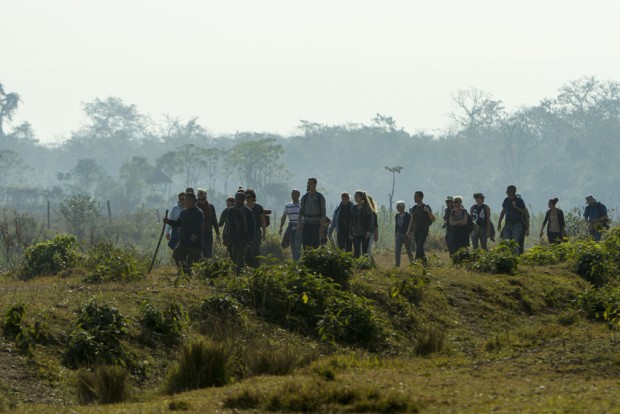Nepal’s tourism industry starting to recover
Nepal’s tourism industry hit hard by the April 25 earthquake and India’s trade embargo is starting to recover.
The streets of Thamel are bustling with tourist traffic again as hordes of adventure seekers from around the world have started to embark on trekking and mountaineering activities with the onset of spring (March-May)—the second peak tourism season in Nepal after autumn.
READ: Nepal quake: Over 1,000 dead, history razed, Everest shaken
Besides, travel trade entrepreneurs have reported a sharp rise in volunteer tourism numbers.
Hoteliers said room occupancy and bookings have started to increase after a disappointing 2015, when the occupancy had hit rock bottom as visitors left the country immediately after the earthquake.
Article continues after this advertisementThe industry was in a buoyant mood after August last year when bookings started to pick up, but the Tarai strikes and trade embargo that resulted in a crippling fuel shortage dampened the revival hopes.
Article continues after this advertisementHotels occupancy had dropped below 20 percent in the March-May period last year from usual 80 percent occupancy recorded in the past years. Due to the fuel shortages, international airlines had also halved their flight frequency to Nepal.
However, with rising number of volunteers and trekkers, hotels have reported a gradual increase in their occupancy rates since the beginning of March. “Hotel occupancy and tour inquiry trends have improved and we can expect a rebound in Nepal’s tourism this year,” said Binayak Shah, general secretary of Hotel Association of Nepal.
He said five-star hotels’ occupancy has increased to above 50 percent. “We estimate all hotels now have more than 40 percent occupancy on an average,” he said.
The occupancy is expected to rise further with the arrivals of mountaineers. Last week, the government decided to extend climbing permits of hundreds of mountaineers who had been forced to abandon their expeditions last year due to avalanche on the Himalaya triggered by the April 25 earthquake.
The permits will be extended for two years until 2017. Last year, 103 teams consisting of 801 individuals had received permits to climb various peaks. Among them, 357 mountaineers, including 18 Nepalis, had obtained permits to climb Everest.
“Though late, it was a positive move of the government and it could boost the number of mountaineers, who are the high-spending visitors,” said Chandra Rijal, president of Trekking Agencies Association of Nepal.
Rijal said there has been a dramatic growth in the number of trekkers. “At least 500 tourists are obtaining Trekkers’ Information Management System (TIMS) card daily,” he said.
Foreigners should obtain the TIMS card before embarking on their journey in Nepal. Annapurna is the most preferred trekking destinations after Everest and Manaslu. Kanchanjunga trek is also gaining popularity of late, according to Rijal.
Tourist arrivals to Nepal fell to a six-year low of 538,970 in 2015, according to the statistics of the Department of Immigration.
The inbound figure includes rescue personnel and volunteers who converged on Nepal to help the earthquake victims and were counted as tourists.
Nepal received 251,148 less tourists last year, representing a sharp drop of 31.78 percent, compared to the 2014 figure. The impact of the killer quake was bigger for Nepal’s tourism industry with arrivals plunging 55.59 percent to 97,510 during the four-month period (May-August) following the disaster.
RELATED STORIES
